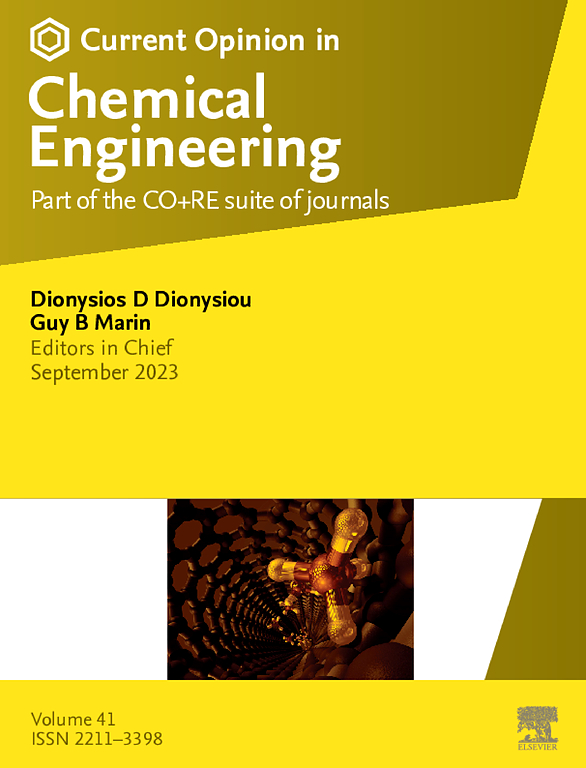Integrating adsorbents and electrochemistry to advance selective wastewater phosphate separations
IF 6.8
2区 工程技术
Q1 BIOTECHNOLOGY & APPLIED MICROBIOLOGY
引用次数: 0
Abstract
Excessive discharges of phosphorus from wastewater streams and agricultural soils have perturbed natural aquatic ecosystems by causing environmental issues like eutrophication. Reimagining liquid waste streams as potential feedstocks can recover valuable phosphate products and decrease reliance on phosphate rock mining for fertilizer production. This perspective underscores the significance of integrating adsorbents and electrochemistry as selective separation techniques, aiming to overcome the current limitations of phosphorus recovery techniques and enhance phosphorus recovery from waste. Compared to existing methods, efficient recovery methods are expected to exhibit reduced energy demands along with improved attributes such as enhanced selectivity, increased capacity, and greater reusability. Achieving these characteristics requires advances in mechanistic understanding of the molecular-level interactions driving the performance of adsorbents and electrochemical approaches. To guide material development, process performance, and mechanistic understanding, we discuss the potential of synchrotron-based techniques (e.g., X-ray imaging and spectroscopy) to assess adsorption mechanisms and processes that degrade the performance of phosphorus recovery approaches over time, including electrode degradation, precipitation, and fouling. Leveraging these molecular insights alongside life cycle analysis and technoeconomic assessments can directly guide process engineering decisions, improving wastewater-derived phosphorus product purity, uniformity, and overall value.
集成吸附剂和电化学推进选择性废水磷酸盐分离
废水流和农业土壤中磷的过量排放造成了富营养化等环境问题,扰乱了自然水生生态系统。重新设想废液流作为潜在的原料,可以回收有价值的磷酸盐产品,减少对磷矿开采用于肥料生产的依赖。这一观点强调了将吸附剂和电化学作为选择性分离技术相结合的重要性,旨在克服目前磷回收技术的局限性,提高废物磷的回收率。与现有的回收方法相比,高效的回收方法有望减少能源需求,同时提高选择性、产能和可重用性。实现这些特性需要在分子水平的相互作用驱动吸附剂性能和电化学方法的机制理解方面取得进展。为了指导材料开发、工艺性能和机理理解,我们讨论了基于同步加速器的技术(例如x射线成像和光谱学)的潜力,以评估吸附机制和过程,这些吸附机制和过程会随着时间的推移降低磷回收方法的性能,包括电极降解、沉淀和污垢。利用这些分子分析与生命周期分析和技术经济评估可以直接指导工艺工程决策,提高废水衍生磷产品的纯度、均匀性和整体价值。
本文章由计算机程序翻译,如有差异,请以英文原文为准。
求助全文
约1分钟内获得全文
求助全文
来源期刊

Current Opinion in Chemical Engineering
BIOTECHNOLOGY & APPLIED MICROBIOLOGYENGINE-ENGINEERING, CHEMICAL
CiteScore
12.80
自引率
3.00%
发文量
114
期刊介绍:
Current Opinion in Chemical Engineering is devoted to bringing forth short and focused review articles written by experts on current advances in different areas of chemical engineering. Only invited review articles will be published.
The goals of each review article in Current Opinion in Chemical Engineering are:
1. To acquaint the reader/researcher with the most important recent papers in the given topic.
2. To provide the reader with the views/opinions of the expert in each topic.
The reviews are short (about 2500 words or 5-10 printed pages with figures) and serve as an invaluable source of information for researchers, teachers, professionals and students. The reviews also aim to stimulate exchange of ideas among experts.
Themed sections:
Each review will focus on particular aspects of one of the following themed sections of chemical engineering:
1. Nanotechnology
2. Energy and environmental engineering
3. Biotechnology and bioprocess engineering
4. Biological engineering (covering tissue engineering, regenerative medicine, drug delivery)
5. Separation engineering (covering membrane technologies, adsorbents, desalination, distillation etc.)
6. Materials engineering (covering biomaterials, inorganic especially ceramic materials, nanostructured materials).
7. Process systems engineering
8. Reaction engineering and catalysis.
 求助内容:
求助内容: 应助结果提醒方式:
应助结果提醒方式:


